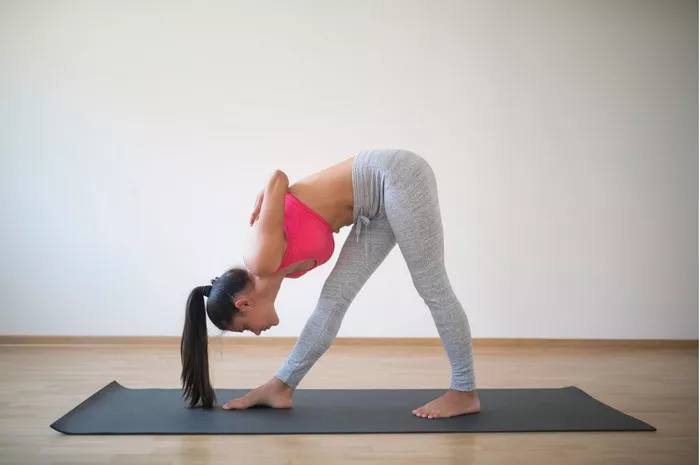In a world where stress is a common denominator and wellness is increasingly prioritized, the ancient practice of yoga stands out as a beacon of holistic health. Within the realm of yoga, there exists a subset that focuses specifically on healing—the aptly named Healing Yoga. Rooted in centuries-old traditions and coupled with modern scientific understanding, Healing Yoga offers a pathway to physical, mental, and emotional well-being. This article delves into the essence of Healing Yoga, exploring its principles, practices, and profound benefits.
Understanding Healing Yoga: A Holistic Approach
Healing Yoga is more than just physical postures or asanas; it is a holistic approach to wellness that integrates the mind, body, and spirit. At its core, Healing Yoga recognizes the interconnectedness of these aspects and seeks to restore balance and harmony within the individual. Drawing from various yogic traditions, including Hatha, Kundalini, and Restorative yoga, Healing Yoga incorporates gentle movements, breathwork, meditation, and mindfulness techniques to facilitate healing on multiple levels.
The Principles of Healing Yoga
Central to Healing Yoga are several guiding principles that shape its practice and philosophy:
Awareness: Healing Yoga encourages practitioners to cultivate awareness of their bodies, thoughts, and emotions. By becoming more attuned to internal experiences, individuals can identify areas of tension, imbalance, or discomfort, paving the way for healing to occur.
Acceptance: Rather than resisting or suppressing discomfort, Healing Yoga emphasizes acceptance and non-judgment. Through acceptance, practitioners develop a compassionate attitude towards themselves, fostering inner peace and resilience.
Intention: Setting clear intentions is integral to the practice of Healing Yoga. Whether it’s promoting physical healing, reducing stress, or enhancing emotional well-being, intentions provide direction and focus for the practice.
Gentleness: Healing Yoga prioritizes gentleness and compassion towards the body. Movements are performed with awareness and sensitivity, honoring the body’s limitations and avoiding strain or injury.
Integration: Healing Yoga seeks to integrate various healing modalities, including yoga poses, breathwork, meditation, and mindfulness. By weaving these practices together, individuals can experience profound synergy and transformation.
The Practices of Healing Yoga
Healing Yoga encompasses a diverse range of practices, each designed to address specific aspects of wellness:
Yoga Asanas: The physical postures of Healing Yoga are gentle yet effective, promoting flexibility, strength, and relaxation. Poses are often modified to accommodate individual needs, making them accessible to practitioners of all levels.
Breathwork (Pranayama): Conscious breathing techniques form an essential component of Healing Yoga. Pranayama practices help regulate the breath, calm the nervous system, and enhance vitality. Simple techniques such as diaphragmatic breathing and alternate nostril breathing can have profound effects on overall well-being.
Meditation: Meditation is a cornerstone of Healing Yoga, offering a pathway to inner peace and clarity. Guided meditations, mindfulness practices, and visualization techniques are employed to quiet the mind, reduce stress, and cultivate present-moment awareness.
Yoga Nidra: Also known as “yogic sleep,” Yoga Nidra is a deeply relaxing practice that induces a state of conscious relaxation. Through guided imagery and body scanning, practitioners enter a state of deep rest where healing and rejuvenation can occur on a profound level.
Energy Work (Prana): Healing Yoga recognizes the importance of energy balance in promoting wellness. Practices such as Reiki, Qi Gong, or chakra balancing may be incorporated to harmonize the body’s energy system and promote vitality.
The Benefits of Healing Yoga
The holistic approach of Healing Yoga yields a wide array of benefits for practitioners:
Physical Healing: Through gentle movement and breathwork, Healing Yoga can alleviate physical ailments such as chronic pain, stiffness, and tension. Regular practice improves flexibility, mobility, and overall physical health.
Stress Reduction: Stress is a pervasive aspect of modern life, contributing to a myriad of health issues. Healing Yoga offers effective tools for stress reduction, helping individuals relax, unwind, and restore balance to the nervous system.
Emotional Well-being: Healing Yoga provides a safe space for emotional exploration and release. By connecting with the body and breath, practitioners learn to process and integrate emotions, leading to greater emotional resilience and well-being.
Mindfulness and Presence: The practice of Healing Yoga cultivates mindfulness and presence, enabling individuals to fully engage with the present moment. This heightened awareness fosters a sense of peace, clarity, and inner calm.
Spiritual Growth: For many practitioners, Healing Yoga is a spiritual journey—a path of self-discovery and transformation. Through practices such as meditation and energy work, individuals deepen their connection to themselves and the larger universe, experiencing a profound sense of interconnectedness and purpose.
Incorporating Healing Yoga into Daily Life
Integrating Healing Yoga into daily life is key to reaping its full benefits. Here are some tips for incorporating Healing Yoga into your routine:
Start Small: Begin with short, manageable sessions and gradually increase the duration and intensity of your practice as you become more comfortable.
Listen to Your Body: Honor your body’s needs and limitations. If a pose feels uncomfortable or strained, modify it or choose an alternative that better suits you.
Set Intentions: Before each practice, take a moment to set an intention—a guiding focus for your session. Whether it’s healing, relaxation, or self-discovery, let your intention guide your practice.
Stay Consistent: Consistency is key to experiencing the benefits of Healing Yoga. Aim to practice regularly, even if it’s just for a few minutes each day.
Seek Guidance: If you’re new to Healing Yoga or have specific health concerns, consider seeking guidance from a qualified instructor or therapist who can tailor the practice to your needs.
Conclusion
In conclusion, Healing Yoga offers a powerful pathway to holistic wellness, integrating the mind, body, and spirit in a journey of healing and self-discovery. By embracing its principles and practices, individuals can cultivate greater awareness, resilience, and vitality, enriching their lives on every level. Whether you’re seeking physical healing, stress relief, or spiritual growth, Healing Yoga invites you to embark on a transformative journey towards wholeness and well-being.
FAQs:
Why does yoga heal trauma?
Yoga can help heal trauma by addressing its effects on the body and mind. Trauma often manifests as stored tension in the body and dysregulated nervous system activity. Yoga practices, such as gentle movement, breathwork, and mindfulness, can release physical tension, regulate the nervous system, and promote a sense of safety and grounding. Additionally, yoga cultivates present-moment awareness, which allows individuals to process and integrate traumatic experiences in a supportive environment.
Do doctors believe in yoga?
Many doctors recognize the therapeutic benefits of yoga and integrate it into their treatment plans. While opinions may vary among medical professionals, numerous studies support the efficacy of yoga for various health conditions, including stress, anxiety, depression, chronic pain, and cardiovascular health. Some doctors even prescribe yoga as a complementary therapy alongside conventional medical treatments.















